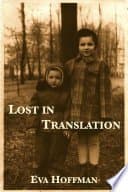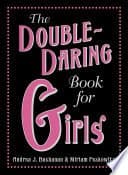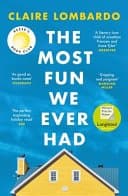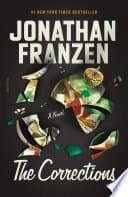The Evolution of Family Structures: From Multigenerational to Nuclear Families
<p>Explore the transformation of family structures, from multigenerational living arrangements to the more common nuclear family model, and its impact on modern society. </p>

Books Featured in This Article
Explore the books discussed
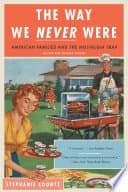
The Evolution of Family Structures: From Multigenerational to Nuclear Families
Throughout history, the concept of family has undergone significant changes. Understanding these shifts can provide valuable insights into current social dynamics and family roles. This article explores the transformation of family structures, particularly focusing on the Western world's transition from multigenerational living arrangements to the more common nuclear family model. We'll delve into cultural, economic, and social factors that influenced these changes and examine key historical events and societal norms that contributed to the evolution of the family unit. By tracing these developments, we aim to shed light on the reasons behind this significant shift and its impact on modern society.
A Brief History of Multigenerational Families
In the pre-industrial era, families were typically multigenerational. Grandparents, parents, and children often lived under one roof, sharing resources and responsibilities. This was a practical arrangement, given the agricultural nature of most societies. ***Multigenerational living facilitated the sharing of labor and economic responsibilities, and allowed for the transmission of cultural and familial knowledge across generations.***
"In these close-knit families, children learned directly from their elders, ensuring the perpetuation of traditions and values."
The Industrial Revolution (1760-1840) began to challenge this structure. As economic opportunities shifted from rural to urban areas, young adults moved to cities for work, gradually breaking away from their extended families. This migration marked the beginning of the decline of the multigenerational household.
The Rise of the Nuclear Family
The post-World War II era epitomized the rise of the nuclear family—composed of two parents and their children. Economic prosperity, suburbanization, and the idealization of the "American Dream" played pivotal roles in this transition. ***The nuclear family was championed as a symbol of modernity and progress.***
"The 1950s and 60s saw the nuclear family become the gold standard of societal success."
But why did this shift occur, and what made the nuclear family so appealing? Several factors were at play:
- Economic Independence: The post-war economic boom allowed families to achieve financial stability, making it feasible to support a household without the need for extended family members.
- Suburban Development: The rise of suburban neighborhoods offered families a chance to own homes with all the amenities of modern life, tailored to the nuclear family model.
- Social Mobility: Education and job opportunities enabled individuals to climb the social ladder, further promoting the idea of the self-sufficient nuclear family.
Furthermore, the media glorified this family structure. Television shows and advertisements frequently depicted the nuclear family as the epitome of happiness and success, reinforcing societal norms.
Impact on Modern Society
The evolution from multigenerational to nuclear families has had profound implications on modern society. ***While the nuclear family brought about independence and stability, it also introduced challenges.***
"Increased isolation and a lack of support systems are notable consequences of this shift."
Here are some of the significant impacts:
- Economic Strain: Single-income families have become less common, and dual-income households are now the norm, placing additional stress on parents.
- Childcare Challenges: With fewer family members to share responsibilities, families often struggle to manage childcare, leading to a reliance on external services.
- Isolation: The separation from extended family can result in feelings of isolation and a lack of support, particularly in times of crisis.
In contrast, some movements are working to revive multigenerational living. The growing trend of "boomerang kids"—young adults returning to live with their parents—highlights a re-emergence of extended family arrangements, driven by economic pressures and changing societal attitudes.
Cultural and Social Influences
The shift from multigenerational to nuclear families was heavily influenced by cultural and social changes. ***As society progressed, personal freedom and individualism became highly valued, further promoting the nuclear family model.***
"The emphasis on personal achievement and modern conveniences redefined family dynamics."
Moreover, advancements in technology and transportation played crucial roles. The ability to live independently while staying connected through phones and later the internet allowed for new family possibilities.
Despite these shifts, some cultures have managed to retain multigenerational family structures. In many Asian and African societies, extended families remain common due to deep-rooted cultural values and economic factors.
The Future of Family Structures
The evolution of family structures is ongoing. ***Modern families are increasingly diverse, encompassing single-parent households, cohabiting couples, and blended families.***
"The definition of family is expanding, reflecting societal changes and the need for more inclusive family models."
As we move forward, factors such as economic conditions, social norms, and technological advancements will continue to shape family dynamics. The pandemic has also highlighted the importance of family support, potentially spurring a renaissance of multigenerational living for practical and emotional reasons.
In conclusion, the journey from multigenerational to nuclear families is a testament to society's ever-evolving nature. By understanding these changes, we can better appreciate the complexities of modern family life and the various factors that shape it.
For a deeper dive into the history and sociology of family structures, I highly recommend The Way We Never Were by Stephanie Coontz.
About the Author

Book Junkie
Your go-to source for book reviews and recommendations.
You Might Also Like
Related Books
Related Articles

Transformative Reads for Teens: Navigating Life at 17
Discover the power of literature with our curated list of essential books for 17-year-olds. From fiction that inspires self-discovery to empowering non-fiction, these reads provide guidance and comfort during the tumultuous teen years. Uncover the wisdom

Unlocking the Secrets of Dark Academia: A Must-Read List
Dive into the enchanting realm of dark academia with our curated list of gripping novels that explore obsession, psychological intricacies, and haunting atmospheres. Perfect for readers seeking literary adventures akin to films like *Kill Your Darlings* a

Unlocking New Chapters: Inspiring Books for Readers in Their 50s
Discover a curated list of transformative fiction and non-fiction books designed for readers in their 50s. Embrace change, find inspiration, and celebrate life's possibilities with these insightful reads.

Unlocking the Secrets of Monastic Life: 12 Novels Rich in Religious Intrigue
Dive into the captivating world of ancient monasteries and religious power struggles through our curated selection of novels. Discover tales that will enrich your understanding of history while satisfying your love for literary intrigue.
